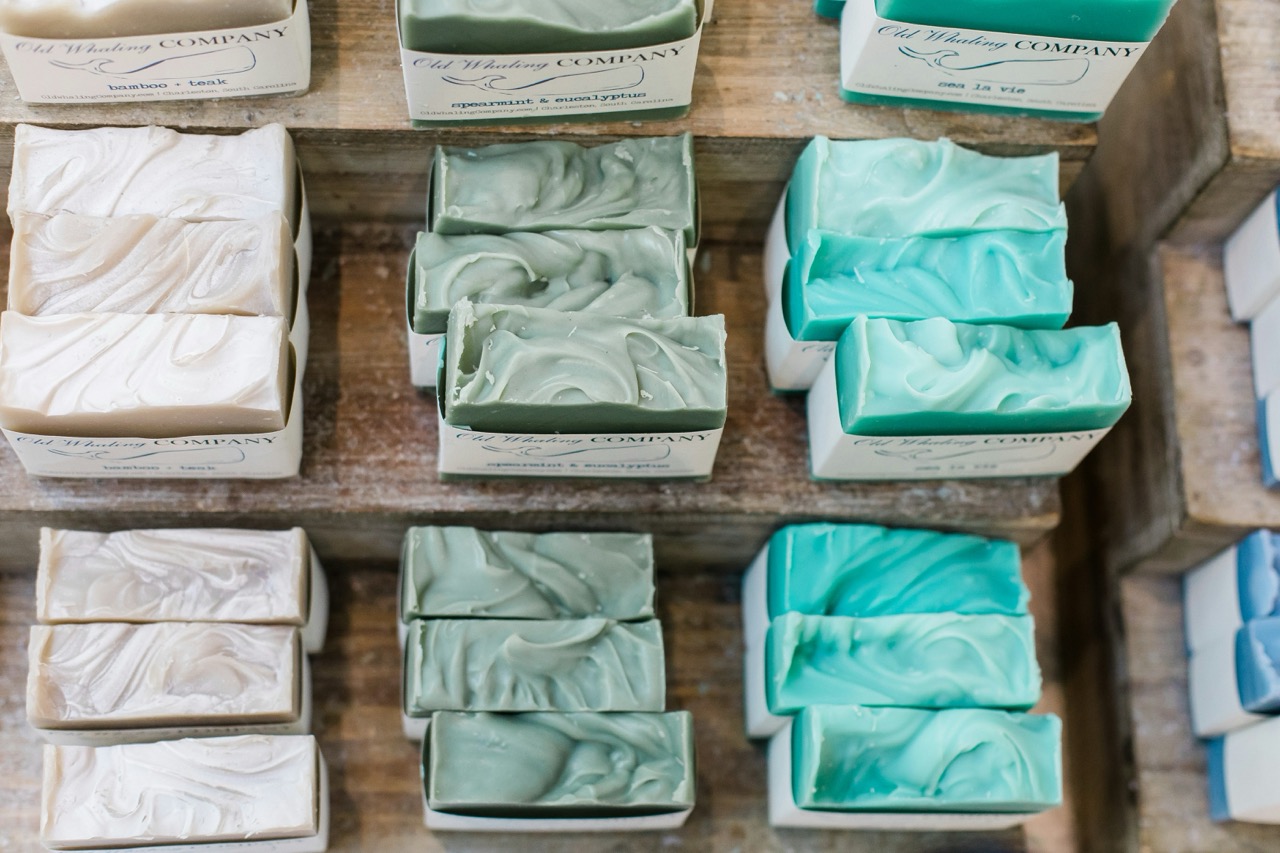How to color soap? 4 different colorants

Soapmaking allows for creativity and personalization, and one of the key elements in making your soap stand out is its color. Choosing the right colorants can transform your soap from a basic cleansing bar to a visually stunning work of art. In this article, we explain how to color soap and explore four different types of colorants to add a vibrant and appealing touch to your handmade soaps.
Why coloring matters?
- The most obvious reason for coloring handmade soap is the enhancement of visual appeal. Colorful soap catches the eye and stands out, making it more attractive to potential users. Whether you opt for vibrant and bold hues or subtle pastels, adding color transforms your soap into a visually stunning work of art!
- What’s more, coloring allows you to personalize your creations even further. Whether you’re making soap as a hobby or a small business, adding color lets you tailor each batch to specific themes, seasons, or preferences. This personalization not only sets your soap apart but also makes it a thoughtful and unique gift.
- Coloring handmade soap is an excellent outlet for creativity. It opens up a world of possibilities, allowing you to experiment with different color combinations, patterns, and designs. Whether you’re a seasoned soap maker or a beginner, the process of coloring soap offers endless opportunities to express your artistic side and create truly one-of-a-kind bars.
- For many soap makers, the process of coloring soap can be therapeutic and relaxing. Mixing and swirling colors can be a calming and enjoyable experience, adding an element of joy to the soap-making process. The satisfaction of seeing the final, beautifully colored product is an additional reward for your efforts!
How to color homemade soap?
Natural colorants
Ingredients like spirulina powder, cocoa powder, and clay can provide a wide range of colors, from earthy tones to bold shades. These colorants not only add vibrancy to your soap but also offer additional skin-loving benefits.
However, you should know that not all natural colorants behave stably in soap. Many of them fade and even change color over time. This is particularly true for powdered herbs. Contact with lye also changes the final coloring effect. Do you think that beetroot juice will give you an intense red color? And blueberries or elderberries a beautiful purple? Unfortunately, in such cases, you might end up with a not-so-appealing brown. But feel free to use carrot juice, turmeric, or marigold if you aim for a yellow/orange soap block, or Himalayan rhubarb if you desire a shade of pink.
Mica powders
Mica powders, also called pearl pigment, are a popular choice for soap makers who want to achieve a shimmering and pearlescent effect. This is the most extensive group of pigments. It contains all the colors of the world! It is characterized by high color stability. It is also easy to use.
Be aware, however, that mineral pigments are not considered natural. They are mainly created in laboratories as synthetic colorants. Yes, they are safe for the skin (after all, they contribute to many cosmetics) and offer many intense colors, but officially, this cannot be regarded as a natural form of soap coloring.

Liquid Soap Dyes
Liquid soap dyes are a convenient option for soap makers who want precise control over the intensity of color. These dyes come in a liquid form, allowing for easy mixing and experimentation to achieve the desired shade. Liquid soap dyes are vibrant and work well with a variety of soap bases. However, it’s essential to use them sparingly to avoid staining and ensure that the color remains stable throughout the soap-making process. You will find these dyes in many color variants and smaller or larger bottles, ready for immediate use.
Pigments and oxides (+ difference between them and mica)
Pigments and oxides are mineral-based, natural colorants derived from sources like iron oxides and chromium oxide. While pigments and oxides are favored for creating solid colors or intricate designs in soap, mica powders are popular – as we mentioned earlier – for adding sparkle and creating soap with an iridescent quality.
Pigments and oxides may require longer mixing, but their stability and color intensity compensate for it, making them some of the most favored colorants among soap makers. Many people also appreciate the naturalness of these products, in contrast to mica, which is sometimes criticized for its uncertain content.
How to make colorful soap? The most important principle
The most important thing is to add the coloring substance to the soap correctly. Here is the simplest method: for natural options like spices or clays, mix the colorant with a small amount of soap batter before adding it to the main batch (it’s a bit like whitening soup with cream). For mica powders or liquid dyes, add a small amount at a time until you achieve the desired color and stir well. Add colorants during the soap-making process when you reach trace (trace is the point where the soap batter has thickened enough to hold an impression).
Summary
Whether you’re making soap for personal use, as gifts, or for sale, the addition of color transforms your creations into unique pieces of art. So, the next time you embark on a soap-making adventure, don’t hesitate to pick up those vibrant colorants and let your imagination run wild. Your handmade soap will thank you for it!


